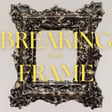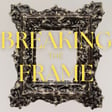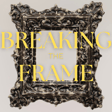
Episode 6: Michael Bramwell
Breaking the Frame is a podcast featuring interviews that explore how museums and the people who work in them shape American history and culture — past and present. This episode, we explore issues of American folk, self-taught, and “outsider” art with Michael Bramwell, an artist, curator, and scholar who recently retired from his role as the Joyce Linde Curator of Folk and Self-Taught Art at the Museum of Fine Arts, Boston.
To keep up with Breaking the Frame, subscribe or visit our website at zencastr.com/Breaking-the-Frame.
More information about the artworks and topics discussed in this episode:
- Hear Me Now: The Black Potters of Old Edgefield, South Carolina exhibition at the MFA Boston https://www.mfa.org/exhibition/hear-me-now-the-black-potters-of-old-edgefield-south-carolina
- “The Enslaved Artist Whose Pottery Was an Act of Resistance” https://www.nytimes.com/2021/06/17/arts/design/-enslaved-potter-david-drake-museum.html
- New Discourses on Folk and Self-Taught Art symposium at the MFA Boston https://www.mfa.org/event/symposium/new-discourses-on-folk-and-self-taught-art
- “MFA Boston Appoints Michael J. Bramwell as Inaugural Joyce Linde Curator of Folk and Self-Taught Art” https://mfa.org/press-release/michael-bramwell-folk-art-curator
- Folk Art of the Americas at the MFA Boston https://collections.mfa.org/collections/315158
- “Heard a Voice, Saw a Light: Spiritual Implications of Creative Belief in Black Vernacular Art” by Michael J. Bramwell, essay in The Unfinished Business of Unsettled Things: Art from an African American South https://uncpress.org/book/9781469668529/the-unfinished-business-of-unsettled-things/
- Minnie Evans https://americanart.si.edu/artist/minnie-evans-1466
- Souls Grown Deep https://www.soulsgrowndeep.org/
- Gee's Bend quiltmakers https://www.soulsgrowndeep.org/gees-bend-quiltmakers
- Joseph E. Yoakum https://www.moma.org/artists/26683
Credits:
- Hosts: Emily C. Casey and R. Ruthie Dibble
- Production Assistant: Katherine White
- Graduate student guest: Reyna Mallory
- Additional research prepared by: Nathan Osborn and the graduate students of the Spring 2024 HA 706/906 Seminar in American Art: American Museums: Race, Class, Labor at the University of Kansas
- Theme music: "Deliberate Thought" Kevin MacLeod (incompetech.com), Licensed under Creative Commons: By Attribution 4.0 License
Artwork: Designed by Katherine White, featuring a frame (ca. 1849-1858) created by the United States Pottery Company currently in the collection of the Metropolitan Museum of Art, available under Creative Commons Zero (CC0)


